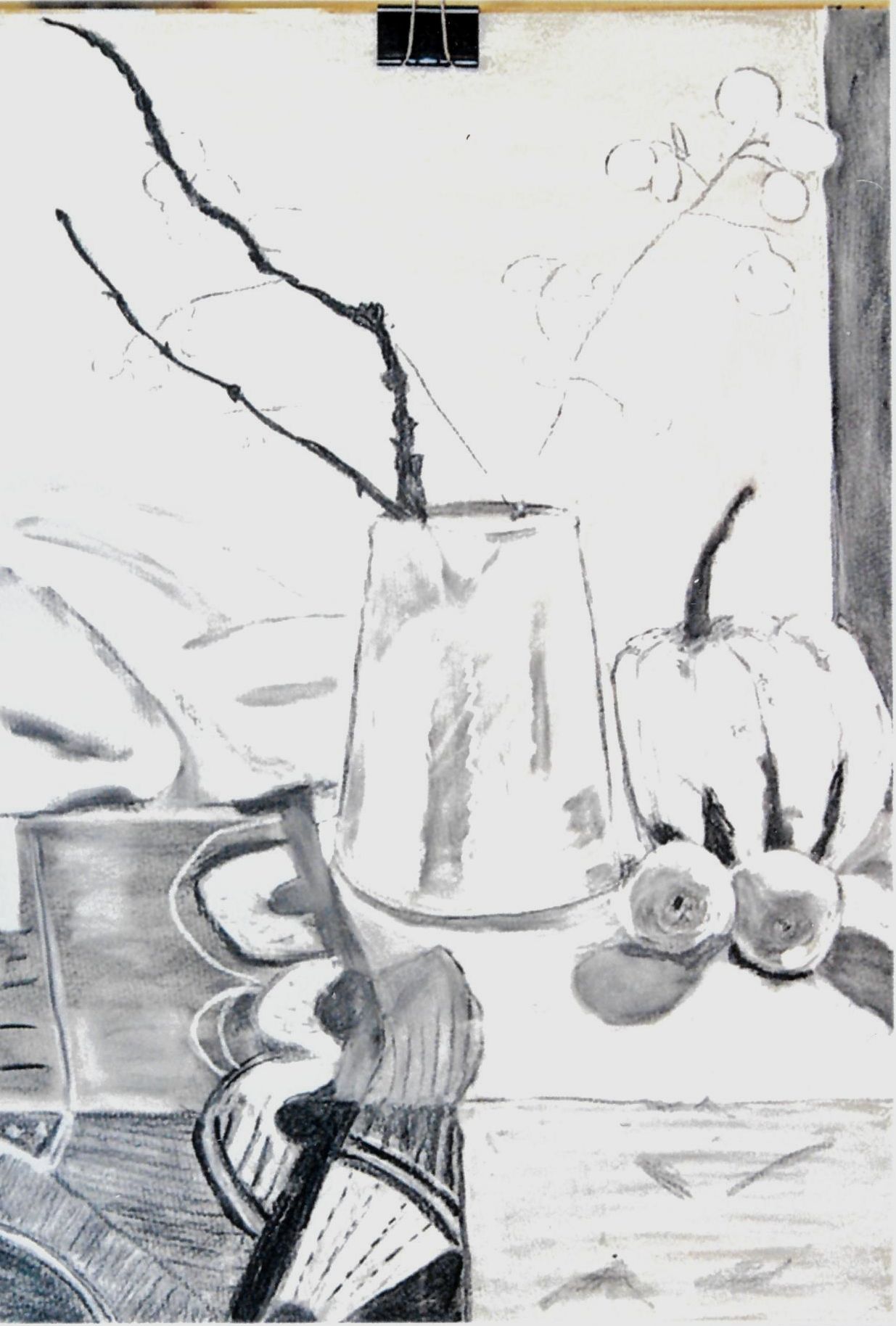RampArts - Community Art Group
Recipe 2: Still Life
The aim of the second exercise is to:
- create a picture in black and white
- arrange a satisfying composition
- consider light and shade

Ingredients
- Chalk
- Charcoal
- Fixative
- Grey pastel paper
- Window frames
- Items for still life
PREPARATION
Set up a still life table where you all get a good view. This picture is about light and shade so strong shapes are most effective. Choose a plain background preferably with light casting shadows onit from the still life. Drape a patterned cloth in the foreground. Place a simple jug or vase holding twigs or seed heads, such as honesty, on a small white cloth. Next to the vase pace two lemons and a melon or small pumpkin.
METHOD
Before you start drawing look at the still life through your window frame. This is a wonderful tool for ensuring a good composition. Decide where rthe vase will be in the picture; how much of the cloth are you going to show? Where are the sides? Can you get everything in?
Make sure the still life nicely fills the page. We're not into perspective yet so you don't want t be confused with how the table legs work! Draw your picture with the charcoal or the chalk - no pencils! As soon as you have simple outlines roughed in strart shading in the light areas with the chalk and the dark areas with the charcoal. If there are mid-tones put one on top of the other. Be confident. Press on hard, you can go over it again if it is wrong.
Your picture isn't finished until all the grey paper is covered. Put your picture away from you, lean it gainst the wall neaar to the still life and squint at it comparing the light and shade with those of your pictire. Squinting is another useful tool! It enables you to get an overall impression rather than the detail. You may find that you have one or two areas that can still be lighter or darker. When you feel the picture is finished open a window and spray it with the fixative to stop it smudging.
RESULTS
You should have some very attractive pictures and not a pencil or paintbrush in sight
You will have thought much more about light and shade while not being distracted by colours. When you do your next picture in colour think about the light and dark areas of the picture
Look carefully at black and white photographs in newspapers and not the arrangement of light and shade. Start to collect pictures from magazines that interest you